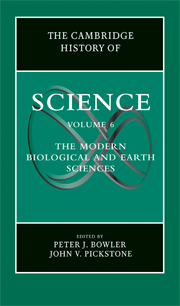29 - Religion and Science
from PART IV - SCIENCE AND CULTURE
Published online by Cambridge University Press: 28 November 2009
Summary
The subject headings list of the U.S. Library of Congress is the most comprehensive such list ever assembled. A bibliographic Michelin’s Guide would give it five stars – this world-class menu showing how Washington’s chefs de livres serve up the field of knowledge. For a century, it has shaped the taxonomic tastes of librarians everywhere, and it still guides the providers of classified information in many fields. Some items on the menu are indeed irresistible, not least “Religion and Science.” This is the library’s preferred rubric for a vast number of publications, outstripping entries under “Science and Religion,” “Theology and Science,” and “Religion and Sciences” by a thousandfold or more. And how is “Religion and Science” carved up? The library divides it into over one hundred categories: by period and by place; through books and serials; in poetry, drama, and fiction; for readers from medics to children. The chronological breakdown is most detailed for the last two centuries, where “Religion and Science” titles are classified from 1800 to 1859, 1860 to 1899, 1900 to 1925, 1926 to 1945, and 1946 to date.
Useful as this scheme may be, like all taxonomies it assumes more than it can prove. For instance, why cut time’s seamless web into segments ending in 1859 and 1925? Centuries are convenient – 1800, 1900 – and 1945 marks the end of a world war, but why pick out the years that saw publication of Charles Darwin’s On the Origin of Species and the “monkey trial” of the Tennessee high school teacher John Scopes? To regard these events as having peculiar significance for organizing a subject as extensive as “Religion and Science” would be controversial, and in fact librarians of Congress have not always done so. A small number of older subheadings draw the line at 1857, 1858, 1879, and 1889; one range of dates ignores 1925 altogether. This suggests that with a little thought and ingenuity it would be possible to devise an entirely different periodization that takes account of the physical sciences, worldwide developments, or merely events in Europe.
- Type
- Chapter
- Information
- The Cambridge History of Science , pp. 539 - 562Publisher: Cambridge University PressPrint publication year: 2009



